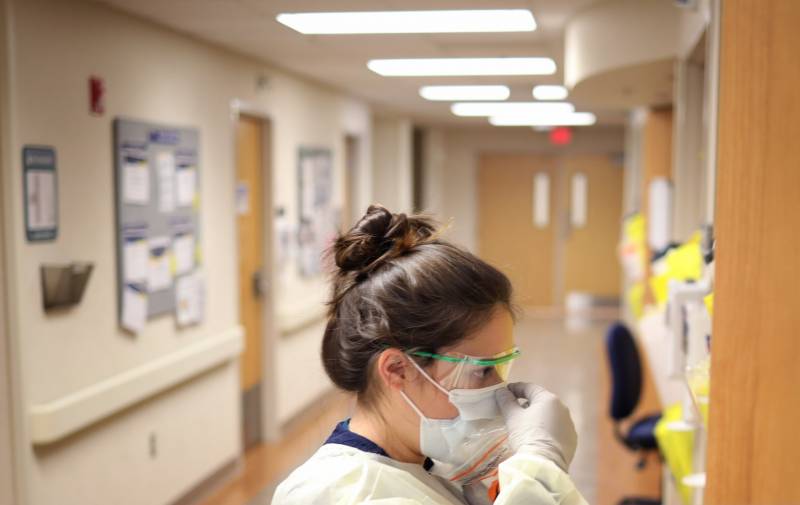The coronavirus, which for most people causes mild or moderate symptoms but for some can lead to pneumonia and death, has upended the U.S. education system. Students from kindergarten to graduate school have been sent home as campuses closed. For nursing students nearing completion of their coursework, the outbreak shut down clinical exercises at hospitals, a graduation requirement.
Nursing deans in California urged regulators to temporarily allow students to get their degrees through more simulated training at sophisticated labs, as other states began doing in response to the coronavirus. Prior to the board’s action, nursing students could only fulfill a quarter of their clinical requirements through simulations that test a variety of scenarios from childbirth to patients with seizures.
At a nursing board meeting on March 11, Judy Corless, a board member from 2009 to 2012, told members they needed to act immediately.
“Now we feel is the time to get this going,” Corless said during public comment. Afterward, none of the board members discussed the issue.
On Thursday, Assemblyman James Gallagher, a Republican from Yuba City north of Sacramento, and a bipartisan group of 18 other state lawmakers sent a letter to the consumer affairs agency and nursing board imploring action.
“This inability for students to join the front lines threatens to severely limit California’s capacity to respond to COVID-19,” the letter said.
Corless and others said board President Michael Jackson has long rejected the idea of simulated learning, which critics say does not provide the same level of training. The Consumer Affairs Department didn’t respond to a request to make Jackson available for comment.
Boosters of simulated clinical learning cite a study from the National Council of State Boards of Nursing, which found no differences in outcomes for nursing students who did simulation training over traditional clinical work.
Other states acted rapidly. In Maryland, days before Gov. Larry Hogan declared a state of emergency, the state’s nursing board director said on March 16 simulation education would be accepted in place of in-person clinical training. Massachusetts issued similar guidelines on March 9, and states like Kentucky, Arizona and Ohio also relaxed in-person clinical requirements.
In California, another related issue arose this week when Newsom announced formation of the California Health Corps and urged medical and nursing students and recent retirees in a variety of health care disciplines to volunteer. The nursing board released guidelines to place nursing students without licenses in medical roles that match their level of education.
But it’s not spelled out that students also will get credits toward graduation.
“This whole situation just leaves everything up in limbo,” said Heather Gautier, a nursing student who signed up for corps and is in her her last semester at Los Medanos College.
In contrast, New York Gov. Andrew Cuomo explicitly authorized health care facilities to allow medical students to earn graduation credits if they volunteer.
Critics say simulated training and other nursing issues in California have been compounded by turmoil at the nine-member nursing board, which approves all licenses for registered nurses and regulates the industry. Its prior executive director, Joseph Morris, resigned in mid-February after several women working for the board accused him of sexual harassment. They loudly interrupted the end of a board meeting that month to detail their allegations.
In an interview prior to the board finally approving simulated training, Corless said Newsom needs to overhaul the board.
“The governor was on the TV yesterday saying, ‘We need nurses, we need nurses,’ ” she said. “Well, he put these people on this board and these very people are preventing it from happening. ... He needs to oust them and put people who know what going’s on.”
California’s auditor began reviewing the board’s oversight of nursing school programs last August. Assemblywoman Blanca Rubio, a Democrat representing a Los Angeles County district, said she requested it because she believes the board is exacerbating the state’s nursing shortage by capping the number of students who can annually enroll at private nursing schools.
“We should’ve acted earlier,” Rubio said about the new waiver for nurses. “There’s a lot on the plate, but if you go down on the list the primary focus should be the medical personnel.”

